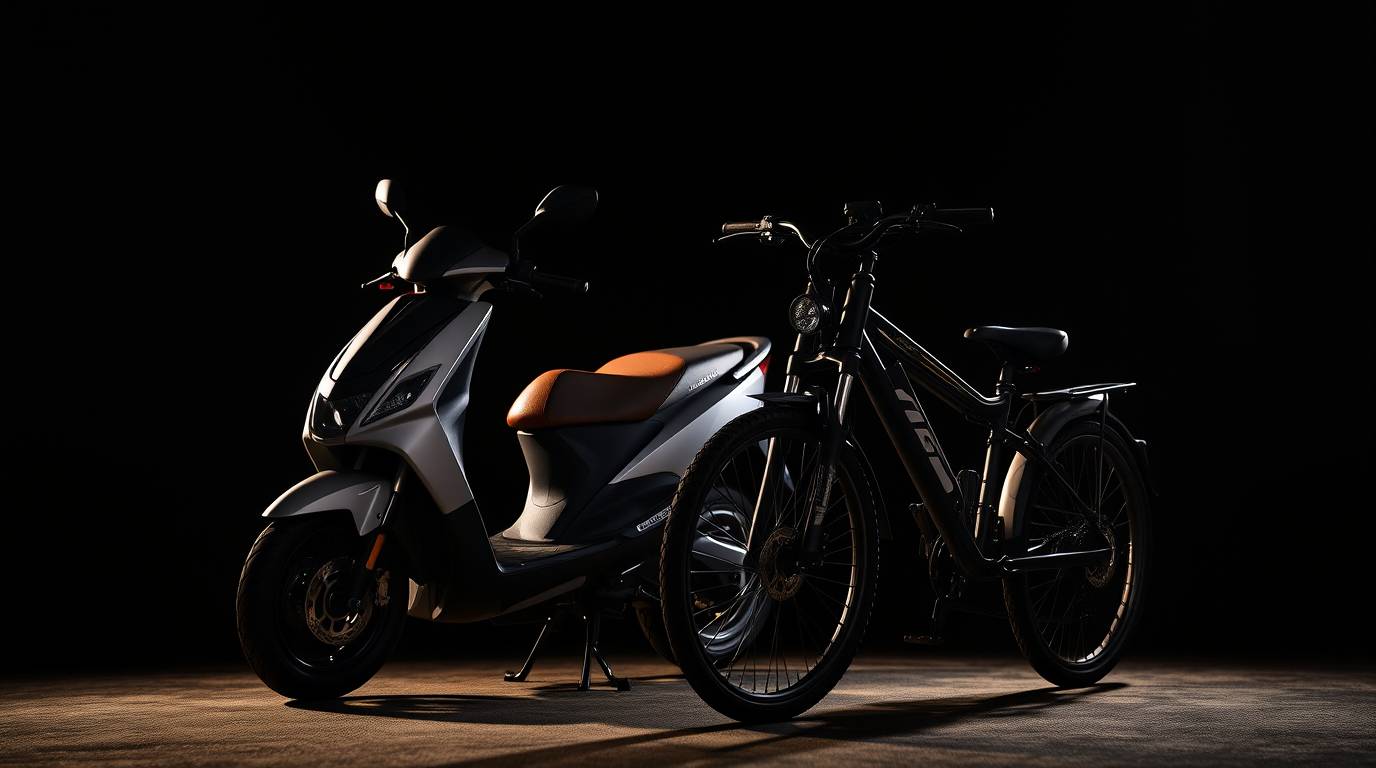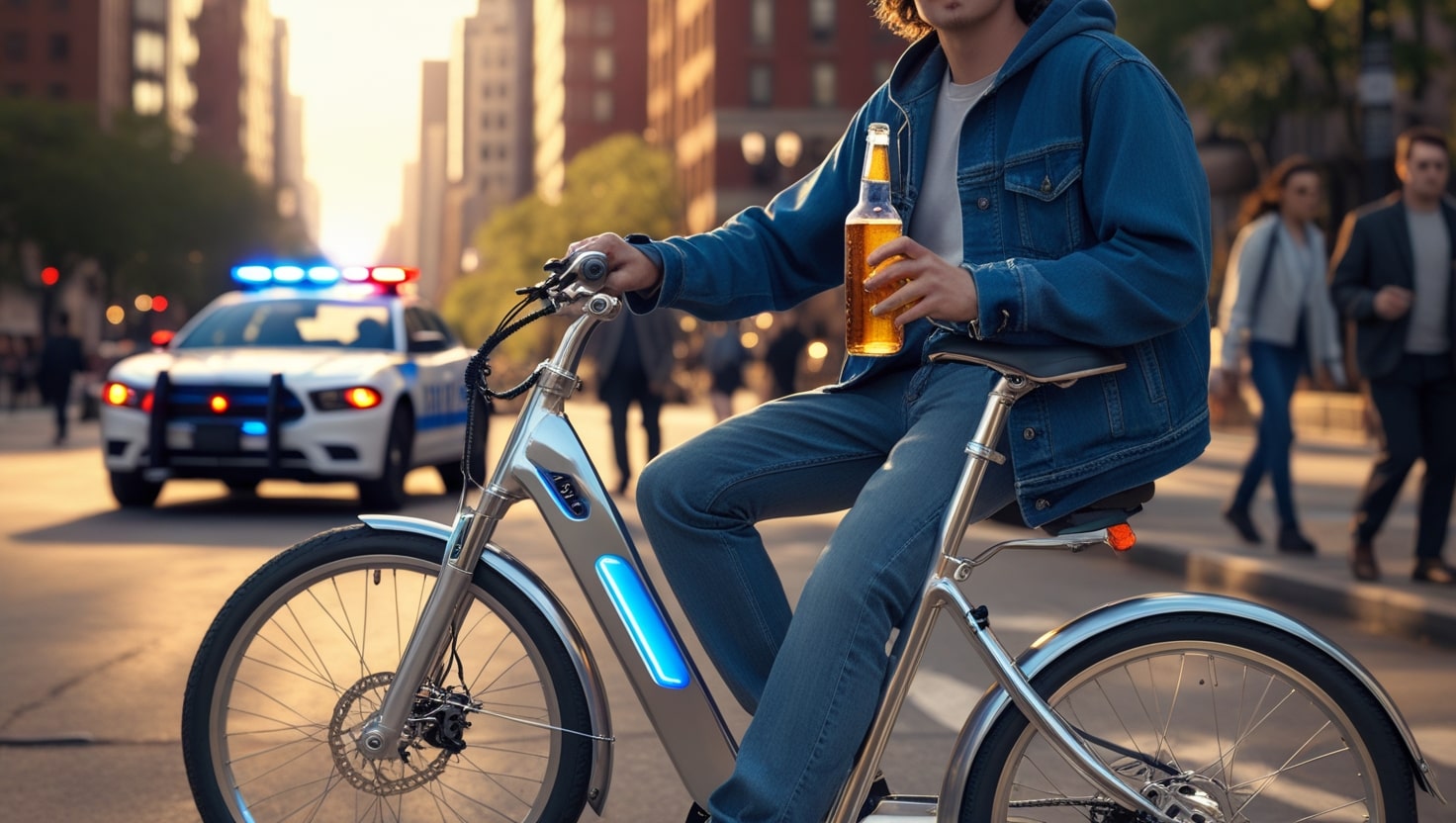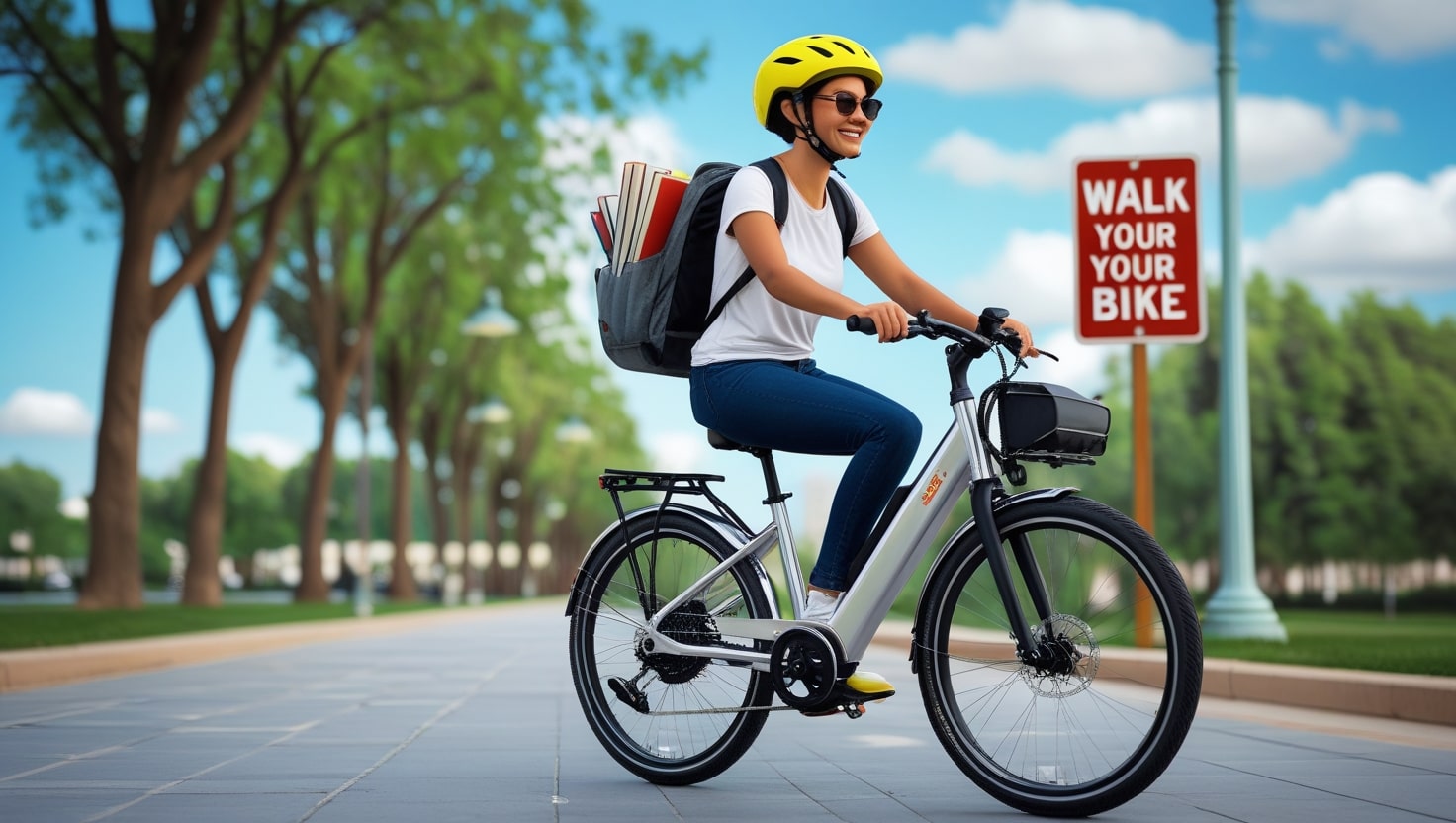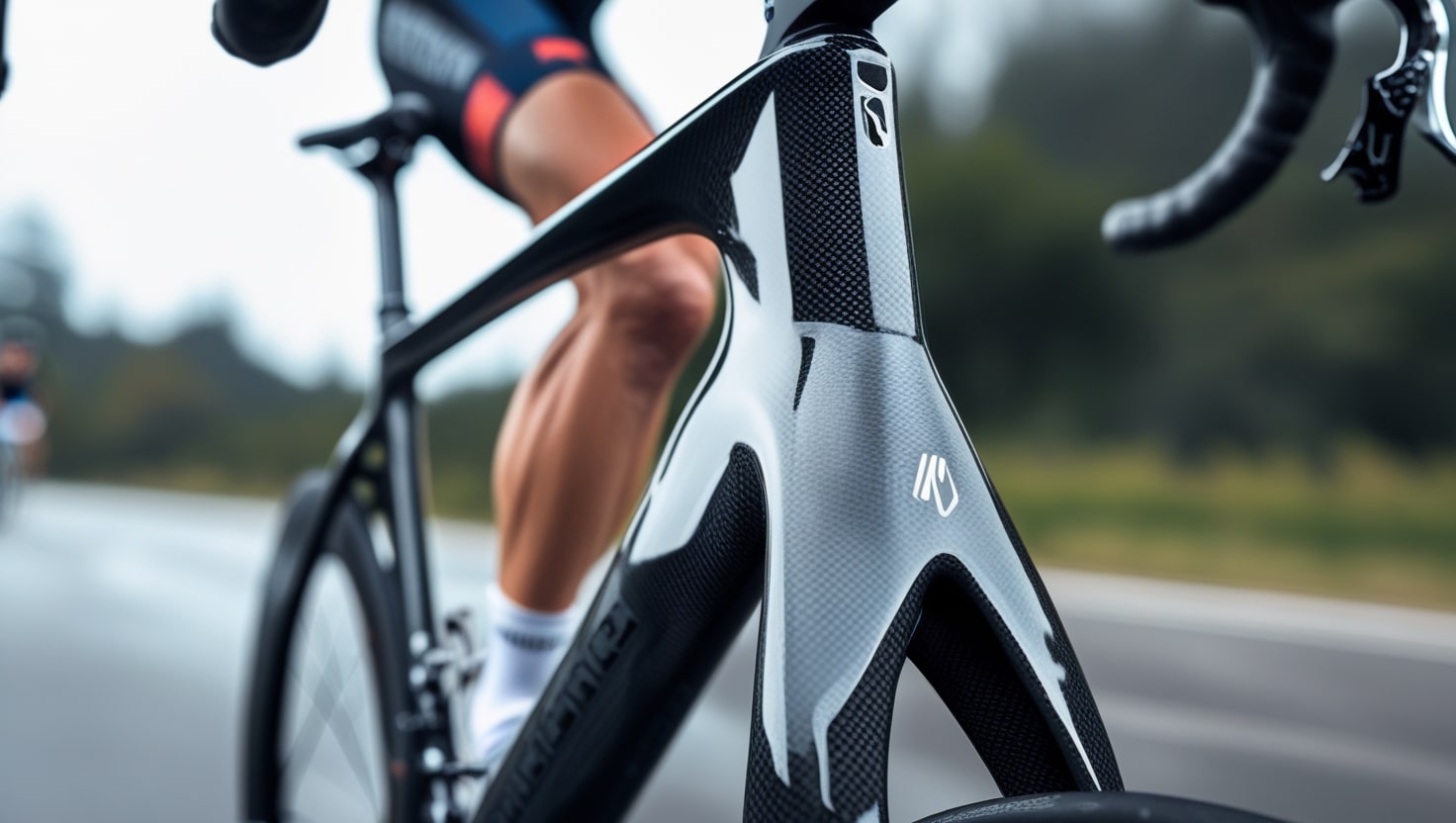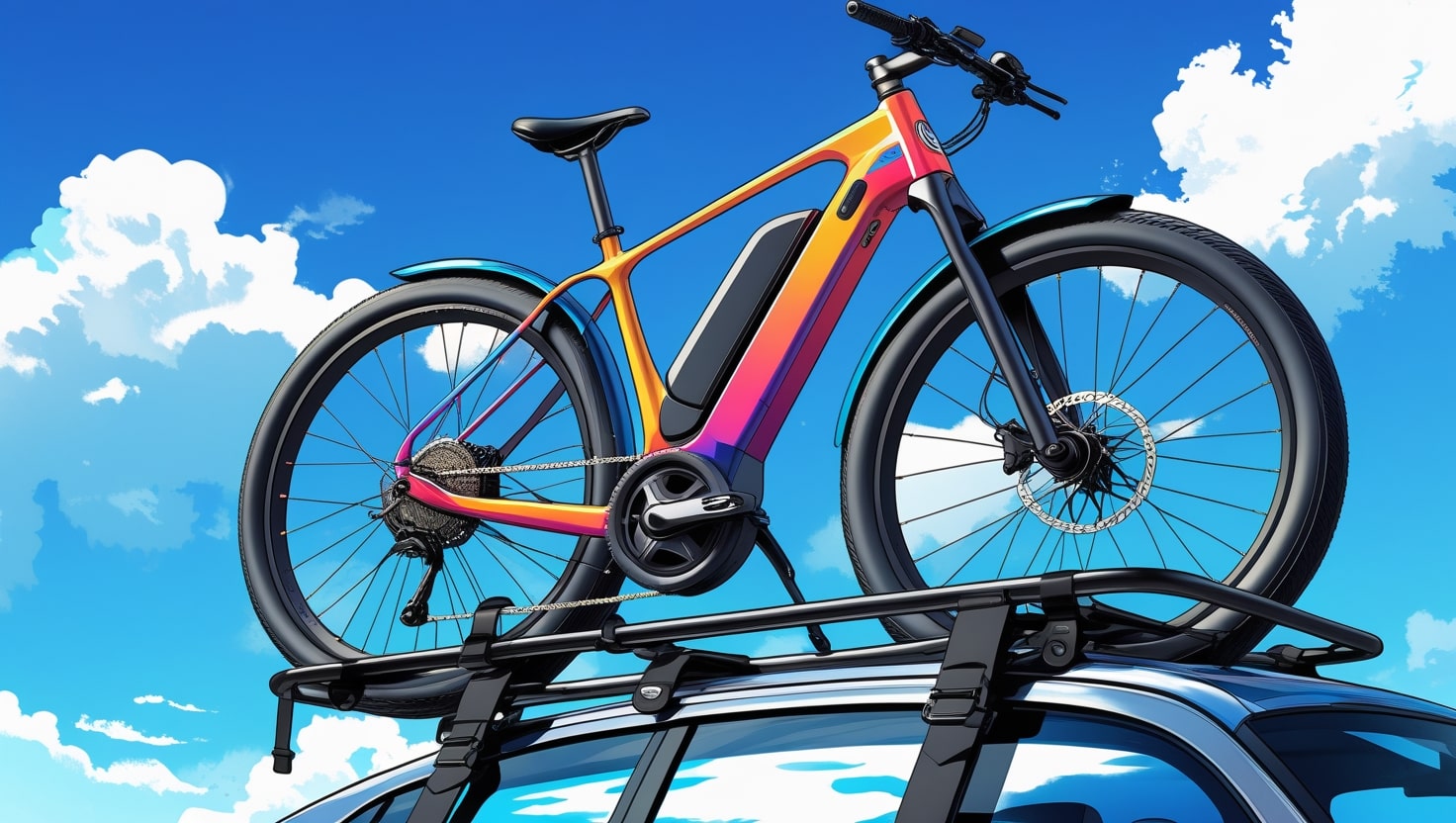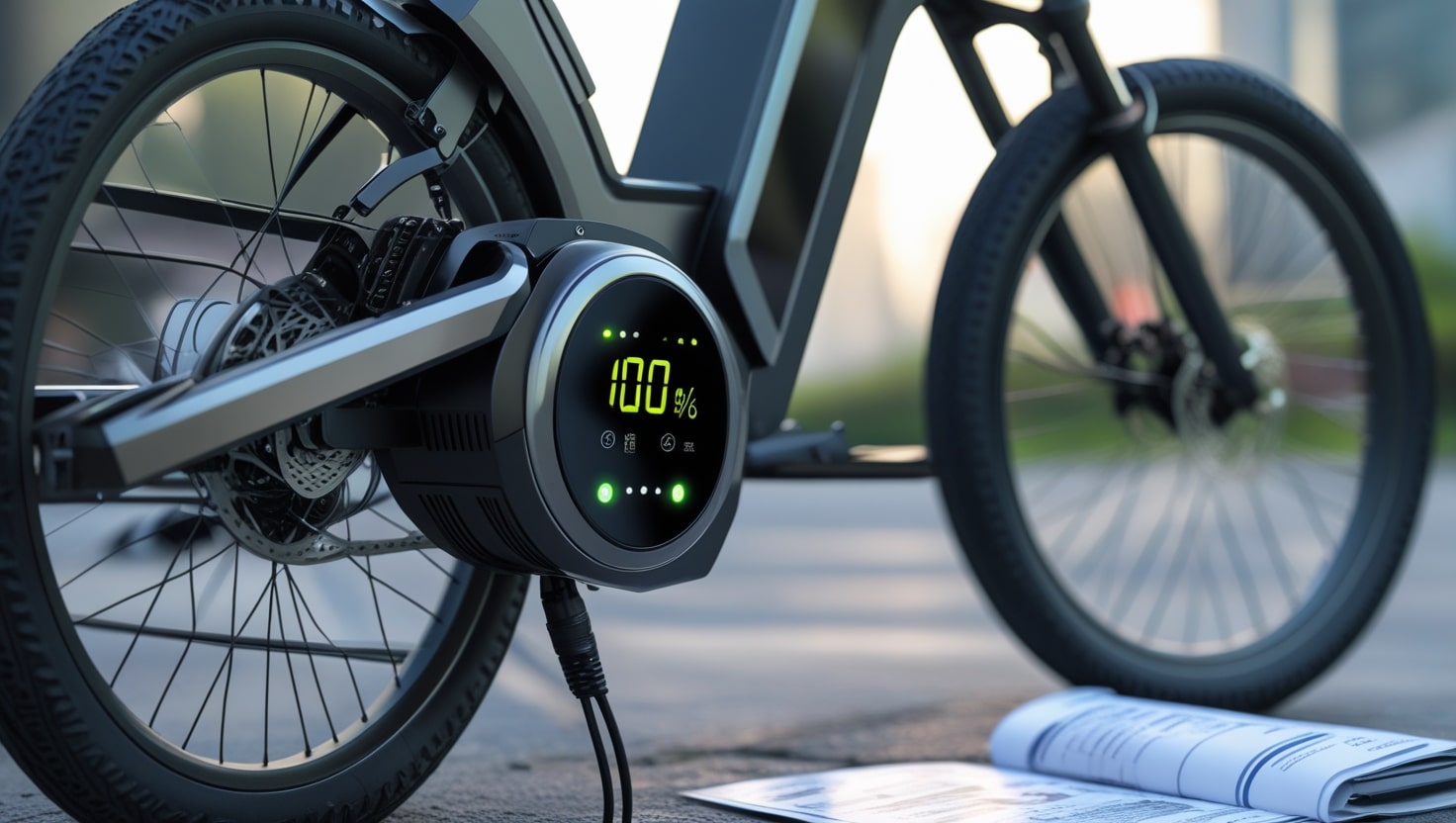When it comes to getting around the city quickly, cheaply, and in a more environmentally responsible way, many people now turn to electric transport. Over the years, options like the e-bike, e-scooter, and pedelec have steadily conquered the urban market, each offering unique advantages. As someone who uses both an e-scooter and an e-bike almost daily, I’ve experienced firsthand how each suits different needs. Some days, a bike with a pedal boost is the best choice for longer distances; other times, hopping on a compact scooter feels more agile and city-friendly.
The main differences between an e scooter vs e bike often come down to what a rider prioritizes—speed, comfort, or terrain. From my experience, pedelecs feel more natural, while e-scooters are easy to fold and ideal for short hops. However, both come with their disadvantages, such as battery limits or terrain limitations.
Overview of the Differences Between E-Scooters and E-Bikes
When comparing an electric scooter to an e-bike, it’s important to know that there are actually three main variants—e-bikes, pedelecs, and the scooter itself. While many people think they’re just choosing between an electric bike and a scooter, the reality is that pedelecs—a type of e-bike—are the most popular choice in several European countries, especially for daily commuters. From my time living in Berlin and Paris, I’ve noticed how often riders compare these modes based on practicality, comfort, and the unique merits.
Pedelec: A pedelec is a type of electric bike that looks just like a conventional bicycle, but it works with the help of a motor. The rider must pedal, and then they are assisted by the motor only up to a speed of 25 km/h (about 15.5 mph). This variant belongs to the e-bike family, and while it feels natural, it requires ongoing pedaling.
E-bike: With one important exception—it can accelerate itself—an e-bike is similar to a regular bike and belongs to the same family as a pedelec. The rider does not need to pedal, and this makes it ideal for those who want a smoother ride. The speeds vary—some e-bikes reach 25 km/h (15.5 mph) while others can go up to 50 km/h (32 mph) even without any assistance.
E-scooter: The e-scooter takes after a kick scooter in design, with a flat deck to stand on, no seat, and no pedals.You only need to kick off once to operate the e-scooter; it will drive and accelerate itself. There’s no need for pedaling, and the maximum speed is usually around 20 km/h (12.5 mph).
What is most noticeable at first glance is that an e-scooter closely resembles a conventional kick scooter, but a pedelec or e-bike resembles a conventional bicycle. But how these variations are categorized legally depends largely on the type of motor assistance they employ; we’ll go into more depth about this in a moment.

Road Traffic Regulations for E Scooter vs E Bike
In many European countries, the legal situation around e-scooters, pedelecs, and e-bikes can be confusing at first. It’s important to distinguish between them, as the law treats each vehicle type differently. A pedelec, which provides motorized assistance only when you pedal, is allowed up to 25 km/h or 15.5 mph and is legally viewed much like a regular bicycle. That means no driver’s license, number plate, or insurance is needed—making it a very accessible option. From my own experience riding a pedelec in the Netherlands, the convenience of avoiding paperwork was a big plus.
In contrast, an e-bike capable of higher speed or self-propulsion is usually classed as a moped. This means you’ll need official papers, a license plate, and liability insurance. The rules are slightly different for e-scooters: slower models are allowed on cycle paths and may not need a driving license, but faster or long-range electric scooters that go up to 45 km/h or 28 mph are often restricted and cannot use the bike lane in most cities.
Direct Comparison of Electric Bikes vs. Electric Scooters
In addition to being lightweight, fast, and simple to ride, electric vehicles should have adequate range to manage everyday errands, commuting, and short excursions with little effort. The choice between an e-bike and an e-scooter ultimately depends on your lifestyle and personal preferences.
Riding Comfort
When it comes to riding comfort, e-bikes and pedelecs clearly have the upper hand. They offer real advantages thanks to a comfortable seat, effortless pedaling, and the boost of a motor, which makes even long distances feel easy. I’ve seen how even senior citizens enjoy smoother rides on these bikes without breaking a sweat. On the other hand, e-scooters are more suitable for short trips because you’re standing the whole time, which can become uncomfortable, especially when the small tires make every pothole noticeable to the riders.
Speed
When it comes to speed, the e-bike clearly stands out, especially the fastest models that reach up to 50 km/h (32 mph)—though these come with strict legal requirements since they’re classified as a moped. More common e-bikes and pedelecs usually top out at 25 km/h (15.5 mph), which still feels quick and efficient for daily commuting. In contrast, e-scooters are capped at a maximum of 20 km/h (12.5 mph) due to driving stability concerns. I’ve noticed that on rough surfaces, the small tires of scooters make the risk of a fall noticeably higher, especially compared to the balanced ride of a bike.
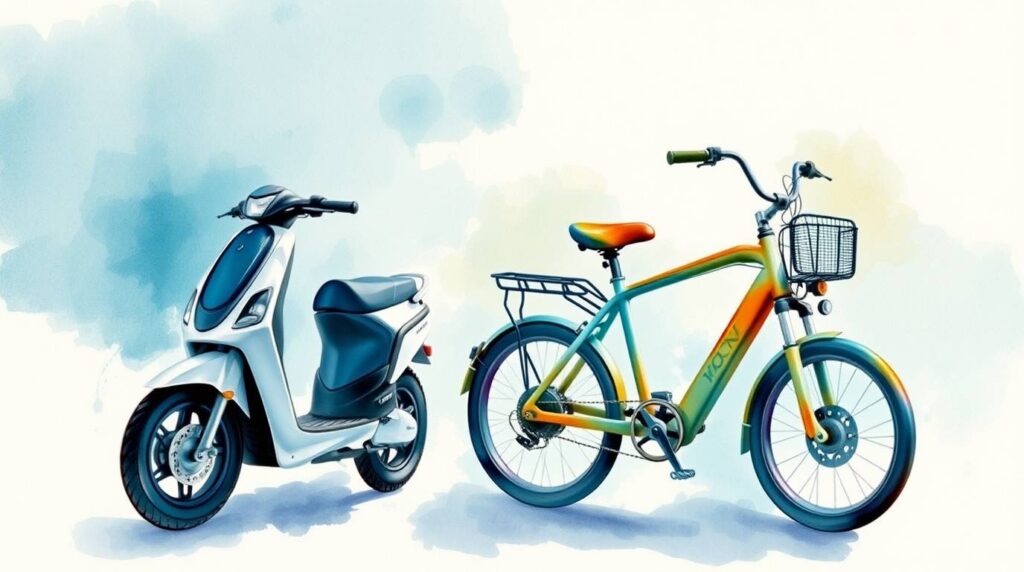
Weight
The weight of e-scooters, pedelecs, and e-bikes can really vary depending on the model, battery, and size, which is something I’ve noticed when carrying them up stairs or loading them into a car. While lightweight pedelecs often come in under 15 kg (about 33 pounds), and some e-scooters weigh a few kilograms less, the range can be affected as a trade-off. Long-distance scooters are typically more heavier. In my experience, the combination of good weight and usable range makes pedelecs the best option for mixed travel and urban rides, giving them a clear edge in portability and performance.
Range
When it comes to range, e-bikes and pedelecs usually go much farther thanks to their design and the ability to keep propelling with pedalling. Many high-quality models can cover distances of up to 100 km (62 miles) with ease, which I’ve found especially helpful on longer weekend rides. In contrast, an e-scooter often covers only a fraction of that. Because of its small, wide wheels, it suffers from more frictional resistance, reducing overall efficiency. Most standard scooters manage around 30 km (18.5 miles), though some special versions can stretch up to 60 km (37 miles)—but they come at a price.
Ease of Charging
Whether you choose pedelecs, e-bikes, or e-scooters, the ease of charging is quite similar for all. Many modern models, like those from Ampler Bikes, come with batteries that are integrated into the frame, which boosts both stability and safety but means they can’t be removed. In my experience, this design looks sleek but requires riders to park close to a household socket. A power supply unit is typically included to charge the battery, and it only takes a few hours to top up. No matter the type of electric transport, the process is straightforward using any standard plug at home.
Transporting Loads with Electric Bikes vs. Electric Scooters
When it comes to transporting loads, electric scooters have their advantages, but they also come with clear disadvantages. One of the biggest issues I’ve personally faced is trying to carry even small purchases—there’s just nowhere to hang shopping bags, and you often end up relying on a backpack. While this might be fine for short trips, it’s far from a practical or long-term option, especially if you need to haul groceries or anything bulky.
In contrast, e-bikes and pedelecs offer a more suitable solution. Most are designed with a luggage rack that can hold up to 25 kg (55 pounds), making shopping easier to manage. Items can be safely stowed and transported without much effort. I’ve also seen people use trailers, like those meant for conventional bicycles, to carry children or even pets—something simply not possible with most scooters.
Power and Performance
When comparing electric bikes to scooters, the first thing I noticed is how different the riding experience feels. With electric bikes, you get the benefit of pedal assistance powered by motors that usually range from 250W to 750W. This electric boost really helps on hills or when you’re pushing through headwinds, especially on your daily commute or a weekend adventure. The power delivery feels smooth and natural, blending with your own pedaling and giving you that classic cycling feel, just enhanced with some extra electric muscle.
On the other hand, scooters operate entirely on propulsion from their motor, without any pedaling. They come with various power outputs, from 250W for flat and easy rides to as high as 500W or 1000W for better acceleration and climbing inclines. Since they’re controlled by a throttle, the speed is managed with just your thumb or finger—totally effortless.
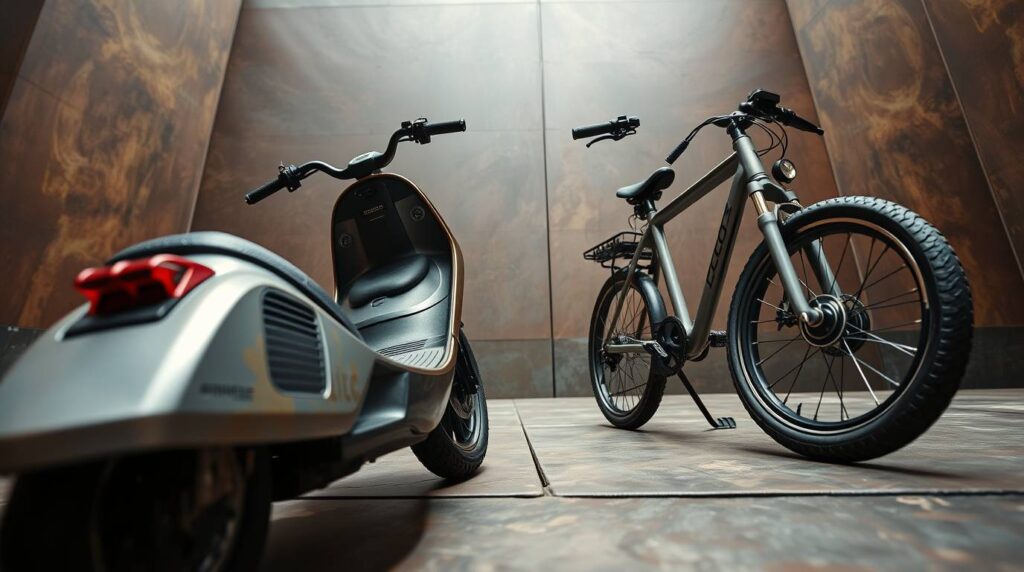
Maneuverability and Parking
One thing I really appreciate about e-scooters is their ability to glide through urban spaces with ease. Their compact design—basically a slim board with wheels—lets you slip between cars, cut across sidewalks (where it’s legal), and weave through bike paths without effort. When riding through crowded city streets, their tight turning ability and quick direction changes are a huge plus
Electric bikes, while great in open areas, are naturally wider, longer, and heavier, with a bigger turning radius that makes handling in city traffic a bit more demanding. Parking is another area where scooters win—you need bike racks or ample wall space for a bike, but you can slide a scooter into corners, under desks, or almost anywhere convenient.
Maintenance: Which Is Easier to Keep Running?
When it comes to keeping things running smoothly, electric scooters clearly have the edge in daily upkeep. With fewer moving parts and no gears or chains to fuss over, they’re easier to maintain, especially if you just want a low-hassle ride. But I’ve found that if a proprietary component fails, it can complicate repairs quite a bit. On the other hand, electric bikes (or e-bikes) require more attention due to their mechanical elements, but most bike shops can handle the service easily because they share many parts with traditional bicycles.
Cost: Which Offers Better Value?
If you’re thinking about your wallet, e-scooters usually have the edge with a lower starting price—you can get a reliable electric scooter for under $1,000. In my own case, I picked one up as a quick fix for urban commutes, and it’s been solid.
Electric bikes, though, tend to be more expensive upfront, typically starting around $1,500 and climbing fast, especially for high-end models that can cost as much as a used car. Still, an e-bike might bring more long-term value since many use standard bicycle parts that are widely available, cheap, and easy to replace—something I’ve found helpful when I needed a quick repair.
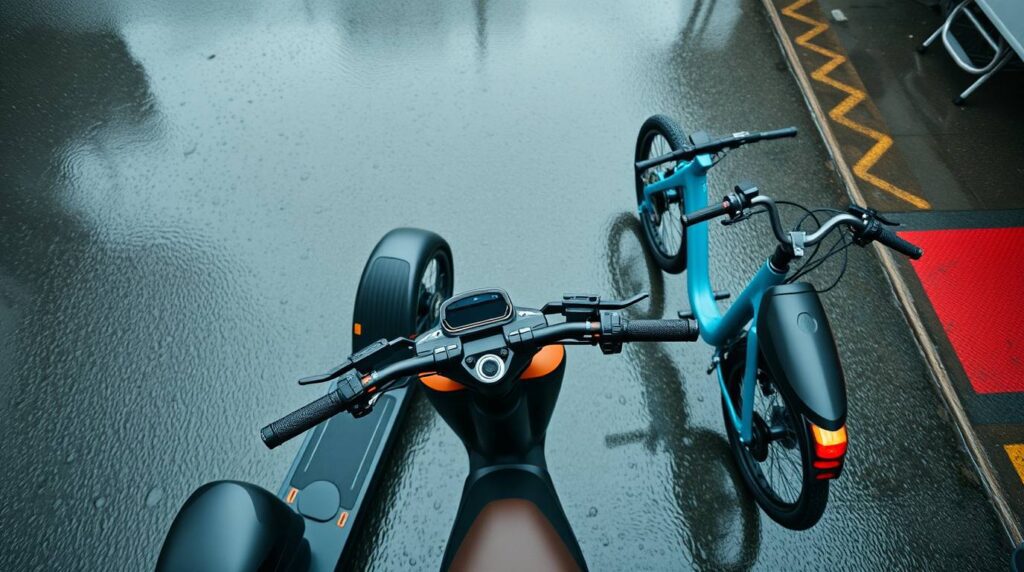
Fitness: Which One Keeps You Active?
If you’re looking to stay active during your commute, e-bikes offer a clear advantage. Since they let you pedal alongside the electric motor, you still get a good amount of exercise without pushing too hard. It’s a great way to fit in some cardio as part of your daily routine, with very little extra effort. E-scooters, on the other hand, offer minimal movement since you’re just standing throughout the ride. That said, many commuters—especially those in office clothes—prefer this because it means no sweat or wrinkled clothes when they show up to work.
Safety Considerations
When thinking about safety, e-bikes generally give you an edge because you sit higher off the ground, almost at motorcycle level, making you more visible to cars. They also tend to come with strong lighting systems and reflective surfaces that boost your visibility on the road. Electric scooters usually have decent lighting and reflectors, but because they’re lower, you’re a smaller target and harder to spot, especially in drivers’ blind spots. I always recommend adding extra lights or wearing reflective clothing, but the basic physics of being low and compact makes scooters a bit riskier in traffic.
Legal Framework
When it comes to legal frameworks, e-bikes are usually easier to deal with since they often fall under existing bicycle laws and are supported by clearer regulations. Electric bikes are widely accepted, and you usually know where you’re allowed to ride. Electric scooters, or e-scooters, on the other hand, can be tricky—they often fall into a grey area where freedom of use comes with uncertainty.
In some cities, scooters are welcomed; others ban them outright or are still trying to regulate their use. Based on my own research and riding experience across several states, laws can vary a lot. For example, if you’re in the U.S., you might want to check out the Electric Scooter Laws U.S 2024 guide to understand local rules before hitting the road.
The Bottom Line
Both electric bikes and electric scooters are great variants of modern electric transport, especially for short distances. From my own experience, if you’re just zipping around the neighborhood or covering quick commutes, a scooter can do the job well. But when I started traveling longer distances, I quickly noticed the advantages of e-bikes and pedelecs—particularly in terms of comfort and range. They ride smoother and let you go farther without fatigue.
If you’re trying to make the right choice for your everyday life, think about what you need most. If carrying loads or gear is part of your day, e-bikes with a luggage rack, or even a trailer using a coupling device make it easier to keep everything transported safely.
FAQs
Can I ride an electric scooter on bike paths?
Depending on where you live, electric scooters may or may not be allowed on bike routes. Regulations vary across areas, with some places allowing scooters on bike paths, while others restrict them to sidewalks or roads. It’s always best to check your local laws before heading out.
Do I need a license to ride an electric bike?
In most cases, standard electric bikes that stay within set power and speed limitations don’t need a license to ride, which is one reason I chose one for my daily commute. But it’s important to know that high-power e-bikes that exceed those limits might be classified differently under traffic laws.
Are electric bikes or scooters better for hills?
If you’re facing steep hills on your route, electric bikes are generally the better choice. Thanks to higher wattage motors and multiple gears, they’re better equipped to handle climbs with ease. What makes them especially effective is the combination of electric assist and your pedaling power.

